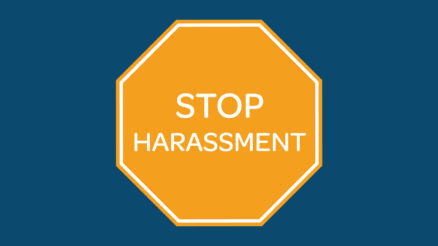Financial risk is the possibility of losing money due to unexpected changes in the economy, markets, or even within a business itself. It can arise from inflation, fluctuating interest rates, volatile currency exchange, unpaid debts, cyberattacks, or government policy changes. In short, financial risk is everywhere-and learning to manage it is crucial for businesses, investors, and even households in the Philippines.
Why Financial Risk Matters – Especially in the Philippines
The Philippines, a fast-growing economy in Southeast Asia, is filled with opportunities but also unique challenges. The country faces a growing national debt, exchange rate volatility, and frequent natural disasters like typhoons that disrupt businesses. Meanwhile, the peso’s movement against the U.S. dollar affects the costs of imports, loans, and investments.
On top of that, rapid digital adoption has opened the door to cyber threats and online fraud, while changing government policies can impact trade, taxation, and regulation. This makes financial risk management more important than ever in 2025.
Key Types of Financial Risk in the Philippines
Market Risk
Market risk refers to losses caused by fluctuations in interest rates, stock prices, or inflation. For example, when the Bangko Sentral ng Pilipinas (BSP) adjusts its policy rates, the cost of loans and mortgages shifts. Businesses relying on loans need to be extra cautious as even a small rate hike can affect their bottom line.
Currency Risk
The peso’s volatility against the U.S. dollar remains a constant concern. Import-heavy businesses-like bakeries buying flour from abroad or electronics retailers importing gadgets-suffer when the peso weakens. Currency risk eats into profits and forces companies to rethink pricing strategies.
Credit and Liquidity Risk
Small and medium-sized enterprises (SMEs) often extend credit to customers. When clients delay or fail to pay, businesses face credit risk. Liquidity risk happens when there’s not enough cash on hand to meet obligations, such as payroll or supplier payments. Many Filipino businesses still rely on post-dated checks, which increases exposure to defaults.
Operational Risk
From IT outages to typhoon damage, operational risks are very real in the Philippines. A single supply chain disruption can cause weeks of downtime, leading to financial loss and frustrated customers.
Political and Regulatory Risk
Elections, new laws, and regulatory updates can change the way businesses operate overnight. For instance, new tax policies or stricter compliance standards can increase costs for companies, especially smaller firms without large compliance teams.
Cyber and Fraud Risk
The Philippines has become a hotspot for digital financial services. While this improves convenience, it also increases vulnerability to hacking, phishing scams, and fraudulent lending platforms. Businesses and individuals face growing pressure to secure their data and transactions.
Systemic Risk
This is the kind of risk that affects the entire financial system. A crisis in one major bank, for example, can spread quickly, shaking confidence across industries. Fortunately, regulators like the BSP actively monitor and implement safeguards to protect against systemic threats.
How the Philippines is Reinforcing Its Defenses
Stronger Monetary Policy
The BSP plays a central role by adjusting interest rates and using monetary tools to control inflation and stabilize the peso. In 2025, this flexibility is helping balance growth with financial stability.
Transparent Financial Reporting
Updated Philippine Financial Reporting Standards (PFRS) make corporate disclosures clearer and more consistent, improving investor confidence and reducing financial uncertainty.
Anti-Money Laundering and Crime Prevention
The Philippines has improved its global standing by tightening anti-money laundering measures. Continuous risk assessments and stronger enforcement keep the financial system safer and more transparent.
Infrastructure and Trade Readiness
Despite challenges, the country is pushing for better logistics, digital infrastructure, and investor-friendly reforms. This minimizes exposure to financial risks linked to weak infrastructure or poor connectivity.
Cybersecurity Initiatives
Government agencies and private firms are investing in cybersecurity programs, employee training, and fraud monitoring systems to fight against online scams and digital theft.
Practical Tips to Manage Financial Risk
Track Economic Indicators
Business owners and investors should closely watch interest rates, inflation, and currency movements. These indicators shape loan costs, import expenses, and investment returns.
Diversify and Hedge
Avoid “putting all eggs in one basket.” Spread investments across sectors and currencies. Companies can also use hedging strategies, like forward contracts, to manage currency swings.
Strengthen Credit Practices
Set clear payment terms, perform credit checks, and reduce reliance on post-dated checks. Consistent monitoring of receivables helps avoid cash flow crunches.
Invest in Resilience
Prepare for disasters-both natural and digital. Businesses should have backup power sources, insurance, and cybersecurity protocols.
Stay Policy-Aware
Keep up with government regulations and join industry groups. Anticipating policy changes makes it easier to adapt without major disruption.
Promote Transparency and Good Governance
Businesses that practice honest reporting and strong internal controls build trust with partners, investors, and customers-reducing reputational and financial risks.
Everyday Examples of Financial Risk
- A rice importer loses profit when the peso weakens and import costs rise.
- A small retail shop faces delayed customer payments, creating cash flow shortages.
- A tech start-up’s loan costs increase after a sudden hike in interest rates.
- A cyberattack steals client data from a financial institution, damaging reputation and finances.
- A regulatory change introduces new taxes, forcing companies to adjust their financial planning.
Final Thoughts: Thriving Despite Financial Risk
Financial risk is unavoidable, but it’s not unbeatable. In the Philippines, businesses and individuals can protect themselves through proactive planning, diversification, stronger governance, and better awareness.
With the right balance of caution and innovation, risk becomes less of a threat and more of an opportunity to grow wisely. In 2025, resilience isn’t just a strategy-it’s the foundation for thriving in an unpredictable economy. 🌏💡



![USD to PHP Exchange Rate Today [Latest Update] USD to PHP Exchange Rate Today [Latest Update]](https://cashloanph.com/wp-content/uploads/2023/05/usd-to-php-exchange-rate-today-cashloanph-438x246.jpg)
